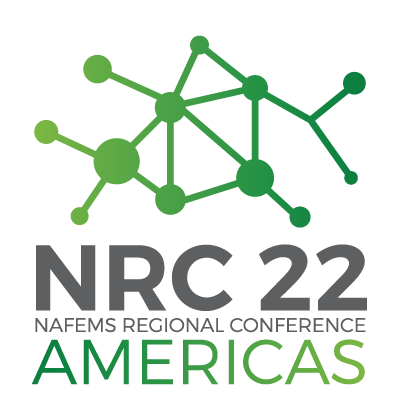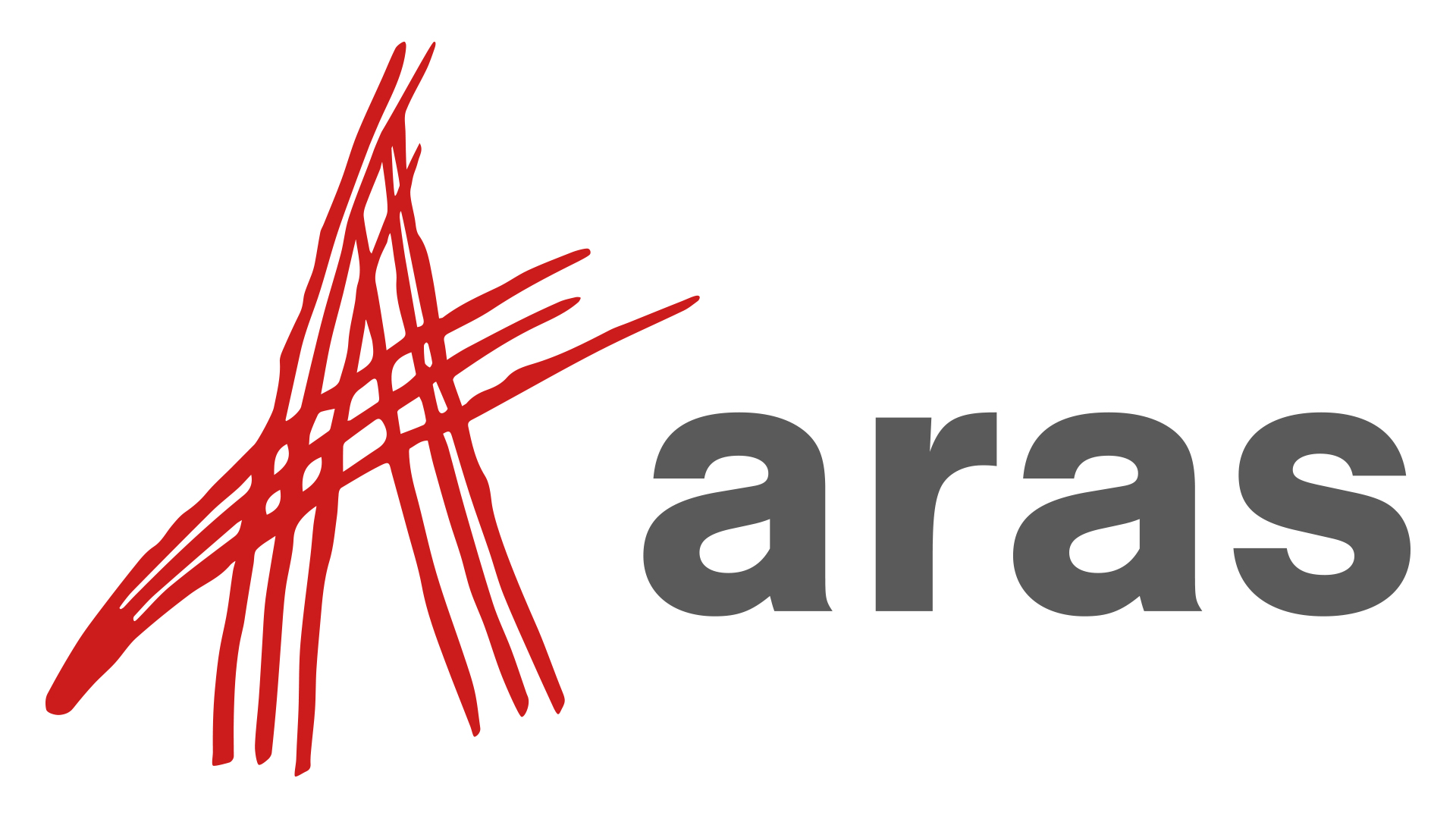NRC22 Americas
Training Courses & Workshops
We understand the importance of training and professional development to you and your organization; therefore, we have decided to offer all NRC22 Americas attendees with a variety of training short-courses over the 2.5-day program, at no additional cost.
With 12 hours of free NAFEMS accredited training courses available at NRC22 Americas, be sure to make a dent in your professional development hours (PDH). We will provide a certificate of completion for each course completed!
NAFEMS Courses Offered
Effective Postprocessing of Structural Analyses
T. Abbey (FE Training)
The range of post-processing options can be bewildering. However, understanding how to interrogate stress results is key to effective FEA. A road map is developed that shows how to use Von Mises, Cartesian and Principal stresses in a logical and authoritative manner. Examples of contour and XY plotting are shown. Load vectors and free body diagrams are also discussed.
Nonlinear Analysis
T. Abbey (FE Training)
Many problems facing engineers are nonlinear in nature, where the response of a structure cannot be simply assessed using linear assumptions. One of the most difficult tasks facing an engineer is to decide whether a nonlinear analysis is really needed and if so what degree of nonlinearity should be applied. This overview will examine these issues, and look at the best ways of creating an analysis plan that matches key objectives.
Dynamic Finite Element Analysis
T. Abbey (FE Training)
This a short overview of the basics of dynamics analysis, building quickly from normal modes analysis to transient and frequency response. The session is packed with hints and tips on the most effective ways to set up these analyses - and some reminders about the implications of a dynamic environment for designers and analysts. Attendees qualify for a 15% discount on Tony's new NAFEMS book, "How to Perform Linear Dynamics Analysis."
Fatigue Analysis
T. Abbey (FE Training)
This short course gives some insight into the methods behind high and low cycle fatigue and fracture mechanics methods. How are they different? When do we use them? What are the implications for FEA?
Composites
T. Abbey (FE Training)
Due to the nature of composite materials, stress analysis and failure prediction is far more complex than isotropic materials. The objective of this overview is to break down the composite FE analysis process into clearly defined steps, give an overview of the physics involved and show how to implement practical solutions using Finite Element Analysis.
CFD for Structural Designers and Analysts
K. Fouladi (Infomec Consulting)
This course aims to introduce the essential principles of fluid dynamics, important flow phenomena, and basics of CFD process to structural engineers for their multidisciplinary problems. This course provides a brief overview of the essential concepts and principles of fluid dynamics, CFD, turbulence, and heat transfer relevant to structural analyses through simple examples and case studies.
Introduction to Practical CFD
K. Fouladi (Infomec Consulting)
Through a simple and moderately technical approach, this course covers topics such as the role of CFD, basic formulation, governing equations and use of model equations, steps in CFD process, need for turbulence modeling, and CFD best practices.
Elements of Turbulence Modelling
K. Fouladi (Infomec Consulting)
This course is focused on understanding turbulence, need for turbulence modeling, and various modeling approaches. Discussions on the advantages and limitations of various models should help CFD users in selecting appropriate turbulence models for their simulations.
Community Courses & Workshops
The listing below represents training or workshop sessions being offered by members in the NAFEMS community. These are not developed by NAFEMS and not directly endorsed by NAFEMS in any way.
Case Studies in High Performance Computing for CAE with Clusters and Cloud
R. Mach (TotalCAE)
This workshop will focus on common high performance computing (HPC) challenges when adopting HPC for CAE simulation through case studies that highlight the pros and cons of on-prem HPC, cloud, ISV clouds, hybrid clouds, and the how example companies chose to overcome their simulation challenges through the use of a variety of HPC options.
Probabilistic Analysis Methods and Approaches for PSE in Probabilistic Analysis
A. Karl (Rolls-Royce) and D. Riha (SwRI)
The NAFEMS Stochastics Working Group recently updated the competencies for the Professional Simulation Engineer (PSE) in Probabilistic Analysis. This training supports gaining understanding and knowledge for several key PSE competencies. This session will include an overview of the PSE competencies in probabilistic analysis, why uncertainty matters in engineering analysis, problem formulation (random variables and limit-states), select probabilistic methods, and examples. This is intended as an introductory course but content will be applicable for those with probabilistic analysis backgrounds and engineering managers.
Simulation's Deep State - How Simulation is Under Utilized and Over Sold – After 50 Years of Development
M. Zebrowski (Consultant - Ford Motor Company, Retired)
This workshop will discuss the 5 tenants of Simulation: 1) the ReWork Cycle - what happens in all Human performed processes, 2) Strategy / Tactics / Operations - Knowing what they are and Don’t Mislabel them, 3) Lean Simulation - moving Forward in time to virtual product and process validation, 4) People / Process / Methods / Tools - in that order, and 5) Learning from Diverse Sources - the More Diverse - the Better. This workshop will also explain why Simulation, in spite of over 50 years of Development still has issues with Confidence, Return on Investment, Staffing, Scalability, Adaptability, Incorrect Design Recommendations and other issues that significantly impacts its adoption, especially where other alternatives exist. Unfortunately, business issues like these are not addressed by analysis groups or are low priority leading to more and more focus on Tactics and hindering the Growth in Simulation that nearly everyone says, “We are the Adults in the Room and, Trust Us, Significant Improvements are just around the corner - We are performing to Schedule.”
Stochastics Challenge Problems: Including Data Uncertainty in Probabilistic Solutions
D. Riha (SwRI)
This workshop will provide a short summary of previous NAFEMS Stochastics Working Group challenge problems and solutions to the current challenge problems from both the SWG and community submissions. Additionally, background theory and limitations of relevant methods, and results interpretation will be discussed.
Multiphysics Analysis of an In-Wheel Traction Motor
J. Wanjiku (Siemens Digital Industries Software)
Proper traction motor design should guarantee its service life, independent of the ambient, drive-cycle, and driver behavior. This can be achieved via an iterative multiphysics development process. In this workshop, this will be illustrated via an in-wheel traction motor under the following:
- How do you ensure the motor’s availability at peak demand at the highest foreseeable ambient temperature?
- Can the rotor structure withstand centrifugal forces at one and twice the maximum rotor speed?
- Can the stator structure withstand the maximum EMAG forces due to operation at peak loading, under fault conditions, e.g., 3-phase short-circuit, rotor-stator misalignment, and which conditions give the worst-case scenario?
- Is the resulting structure NVH complaint?
Why Perform High Fidelity Electrical Vehicle Thermal Management for Accurately Predicting Performance?
I. Illa (Siemens Digital Industries Software)
It is becoming more vital to analyze the entire vehicle through simulation to capture the multiphysics complexity not only at the component but also at the vehicle level as it a multi-attribute problem. This workshop presents a case study for an EV based SUV which considers the battery and e-machines’s multiphysics aspects of - electrochemistry, thermal and electromagnetics and thermal mechanisms respectively. Quizzes will be included for active audience participation.
Machine Learning for Engineering Design with Demonstrations
F. Kocer (Vice-Chair, Engineering Data Science Working Group)
The goal of this session is to do a deeper dive into the application of Machine Learning for engineering design through a number of demonstrations. We will be showing the audience the entire processes involved, pointing to challenges faced in each application, sharing tips and tricks for successful application of ML in their projects. Files and presentations will be shared after the workshop.
The Democratization of Multiscale Modeling
J. Wollschlager (Altair Engineering, Inc.)
Composite design and analysis technologies have advanced significantly since the technology of the late 20th century. Unfortunately, much of this technology is currently not being applied by the mainstream user base, but indeed still resides with early adopter experts. In order to make steps toward the future in advanced composite design and analysis, integration and democratization of two main topics needs to be developed. First, more accurate and computationally efficient advanced material modeling with multiscale technology is needed to capture more “correct” physics at the constituent scale. Second, the integration of induced residuals and orientations available from manufacturing simulations as initial conditions into structural simulations is required to capture more “correct” homogenized stress/strain states. In the end, what this means is migrating from a homogeneous isotropic world to a heterogeneous anisotropic world and making that transformation easy for users. To highlight the integration and democratization developments, a demonstration of Traditional and Automated Layup, Injection Molding, and Composite Pressure Vessel (CPV) workflows will be shown and discussed.

























